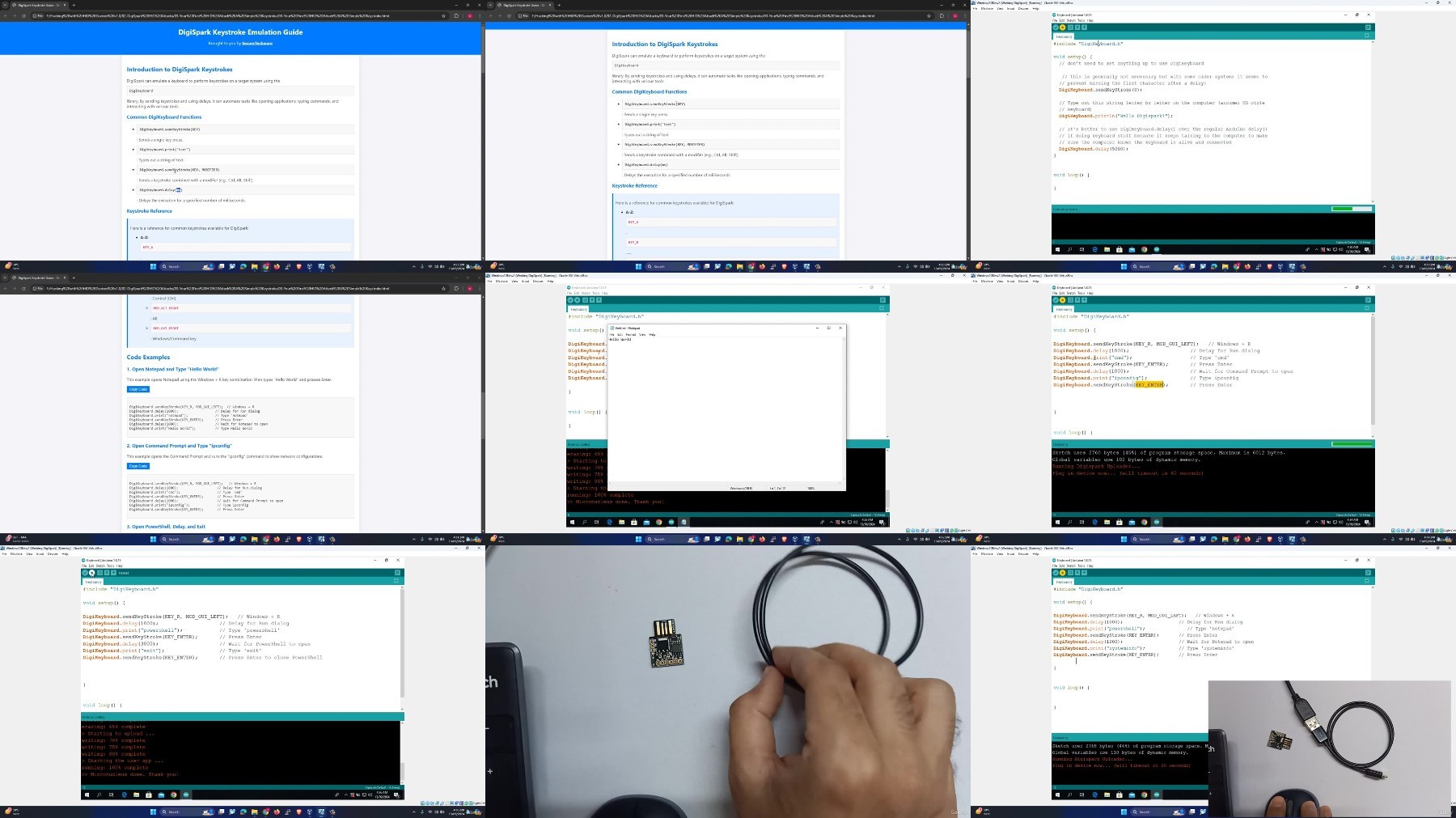Ethical Hacking With Hid Devices V1.0

Ethical Hacking With Hid Devices V1.0
Published 10/2024
MP4 | Video: h264, 1920x1080 | Audio: AAC, 44.1 KHz
Language: English | Size: 1.21 GB | Duration: 1h 39m
Build your skills and knowledge of HID with practical examples and real-world scenarios.
What you'll learn
The fundamentals of HID (Human Interface Device) and how they work
How to set up environments for HID using various devices
Techniques for executing commands
How to perform shell
Step-by-step guidance on configuring and using DigiSpark, Arduino Micro, and other tools
Requirements
Basic knowledge of computers and operating systems (Windows, Linux, etc.)
Familiarity with programming or scripting languages (optional but helpful)
A computer for hands-on practice with HID devices
An interest in cybersecurity and ethical hacking
Willingness to follow along with practical demonstrations and tutorials
Description
Welcome to Ethical Hacking with HID Devices v1.0, a comprehensive course designed to immerse you in the world of HID through practical, hands-on experience. In this course, you'll explore how seemingly harmless USB devices can be programmed to execute powerful coverts by mimicking human interactions, like keystrokes and mouse movements. HID (Human Interface Device) involves using devices that are trusted by computers, such as keyboards or USB drives, to deliver commands without detection.Throughout this course, you'll start with the fundamentals, understanding how HID work and why they are a critical component of modern penetration testing. You'll dive into real-world scenarios, learning to configure and use a variety of devices including DigiSpark, (Arduino Micro), Cactus, and Raspberry Pi Pico. With step-by-step guidance, we will show you how to craft and deploy HID payloads, starting from simple to more advanced executing commands on a server.As you progress, you'll master shell techniques that allow you to control systems and commands with precision. You'll also learn how to set up your environment, install necessary tools, and use platforms to run and deploy scripts for ethical hacking purposes.The course provides a solid foundation for beginners while also offering advanced concepts for more experienced learners. Whether you're interested in exploring hardware-based security, want to enhance your ethical hacking toolkit, or are seeking to deepen your knowledge of cybersecurity, this course has something for everyone. By the end, you'll have the confidence to apply these techniques in ethical hacking scenarios, understand how to protect systems from HID-based attacks, and defend against similar vulnerabilities in real-world environments.Enroll today and take the first step into mastering HID!
Overview
Section 1: Introduction
Lecture 1 Introduction
Section 2: 02-DigiSpark Device
Lecture 2 02-Setting Up Your DigiSpark Environment
Lecture 3 Coding with DigiSpark
Section 3: Arduino Micro Microcontroller
Lecture 4 Configuring Your Arduino Micro
Lecture 5 Programming with Arduino Micro
Section 4: Cactus Microcontroller
Lecture 6 Configuring Your Cactus Microcontroller
Lecture 7 Programming with Cactus Microcontroller
Lecture 8 Wireless Programming with Cactus
Section 5: Arduino Leonardo + ESP8266
Lecture 9 Configuring Your Arduino Leonardo and ESP8266
Lecture 10 Live Wireless Programming
Section 6: Raspberry Pico Microcontroller
Lecture 11 Configuring Your Raspberry Pico
Lecture 12 Programming Raspberry Pico
Ethical hackers and penetration testers looking to expand their skills in hardware-based secuirty,Cybersecurity professionals wanting to understand HID and how to defend against them,Students and learners interested in hardware security and security techniques

DDownload
RapidGator
FileStore
TurboBit
